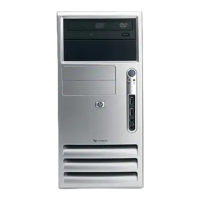





Do you have a question about the Compaq dc5100 - Microtower PC and is the answer not in the manual?
| Audio | Integrated AC'97 audio |
|---|---|
| Network | Integrated Broadcom NetXtreme Gigabit Ethernet |
| Operating System | Windows XP Professional |
| Power Supply | 250W |
| Processor | Intel Pentium 4 |
| Memory | Up to 4 GB DDR SDRAM |
| Storage | 40 GB SATA |
| Graphics | Integrated Intel Graphics Media Accelerator 900 |
| Optical Drive | DVD-ROM |
| Expansion Slots | 1 PCI Express x16 |
| Ports | audio in/out |
Lists the primary tasks the Computer Setup utility can perform.
Covers changing defaults, system configuration, and boot order.
Highlights password, security options, and system identification.
Step-by-step guide on how to enter the Computer Setup utility.
Instructions on using keys and navigating menus within the utility.
Explains how to apply changes, ignore them, or reset defaults.
Displays detailed system hardware and software information.
Shows the copyright notice for the utility.
Allows configuration of the system's current time and date.
Covers saving and restoring system configuration to removable media.
Options to save current or restore factory default settings.
Applies selected defaults and clears passwords.
Exits setup without saving any changes.
Saves current configuration changes and exits the utility.
Lists and configures installed BIOS-controlled storage devices.
Details diskette types, drive emulation, and default IDE/SATA values.
Covers translation modes and parameters for ATA disks.
Enables or disables booting from removable media.
Manages legacy diskette write and BIOS DMA data transfers for disk I/O.
Configures SATA emulation and enables/disables IDE/SATA controllers.
Manages secondary SATA controllers and performs DPS self-tests on hard drives.
Specifies the sequence for booting from various devices.
Allows setting an administrator password for Computer Setup access.
Enables or sets a password required at system startup.
Configures password requirements for warm boots (CTRL+ALT+DEL).
Enables Smart Card use instead of a Power-On Password.
Manages chassis intrusion detection and related security actions.
Manages and resets the embedded security device features.
Enables/disables security for integrated I/O devices like ports and controllers.
Controls the ability to boot from a network server.
Configures system identification details like asset tags and serial numbers.
Manages passwords for MultiBay hard drives to secure access.
Enables/disables DEP to prevent OS security breaches.
Protects the Master Boot Record by rejecting unauthorized write attempts.
Saves a backup of the current bootable disk's Master Boot Record.
Restores a previously saved Master Boot Record to the bootable disk.
Configures runtime and idle power savings features for the OS.
Manages power settings for SATA devices and buses.
Controls fan speed settings via a bar graph for thermal management.
Configures POST mode, messages, and key prompts (F9, F10, F12).
Covers option ROM prompts, remote wakeup, power loss behavior, and POST delay.
Manages I/O APIC, ACPI/USB buffers, hyper-threading, and CPUID limits.
Allows setting a specific time for the computer to turn on automatically.
Configures resources or disables onboard system devices like controllers.
Lists PCI devices and allows reconfiguration of IRQ settings.
Enables or disables PCI SERR# Generation and VGA palette snooping.
Configures printer modes, Num Lock state, Wake on LAN, and processor cache.
Manages sleep state blink patterns, integrated video, and NIC PXE ROM download.
Specifies the primary VGA controller when multiple PCI video adapters are present.
Restores NVRAM using a power button override feature.
Describes saving and restoring configuration settings using diskette or USB media.
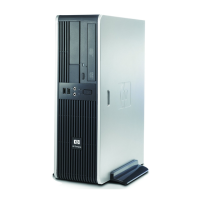
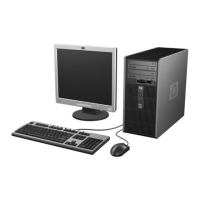
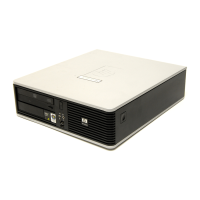




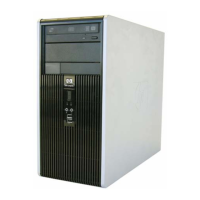
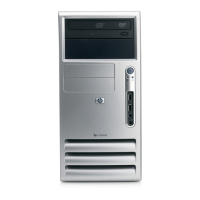
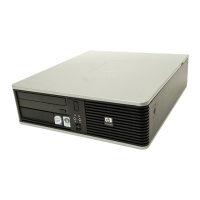
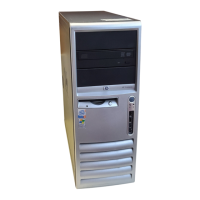

